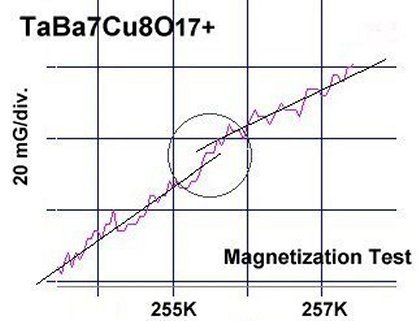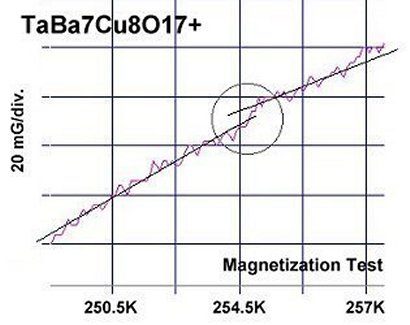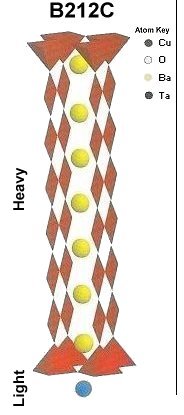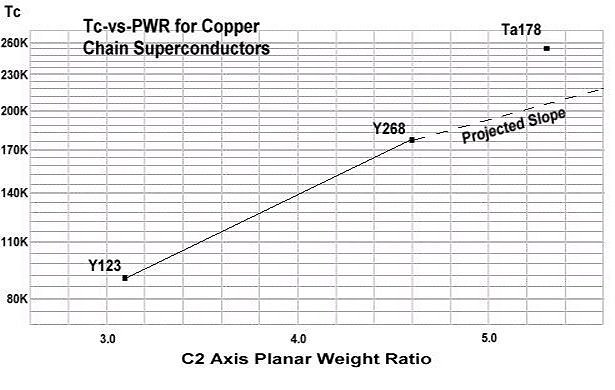




|
 |
The above right graph shows how Tc should increase with higher planar weight ratios along the C2 (TaBa) axis. The projected slope was derived from the graphs of several dozen other high-temperature superconductors that were created through the application of planar weight disparity. The position of Ta178 on the graph is almost 50 degrees Kelvin higher than it should be. This is probably due to the high dielectric constant of TaCuO.
Charge reservoirs in copper-oxide superconductors have long been theorized to be facilitators of the superconductivity process. Charge reservoirs are simply microcapacitors at the atomic level - oxygen sandwiched between conductive metals. As such, the dielectric constant of these microcapacitors determines how much charge can be stored. Tantalum-oxide has a dielectric constant of 25. And tantalum-copper-oxide has a dielectric constant over 100.1 So the improvement in storage capacity in this material is significant. This discovery also supports the theory that superconductivity in the layered cuprates originates in the oxygen layers - especially where the planar weight ratio is highest.
Synthesis of TaBa7Cu8O17+ was by the solid state reaction method. Stoichiometric amounts of the below precursors were mixed, pelletized at 60,000 psi and then sintered for 10+ hours at 885C. The pellet was then annealed for another 10 hours at 500C in flowing O2.
Ta2O5 99.993% (Alfa Aesar) 1.59 grainsTemperature was determined using an Omega type "T" thermocouple and precision OP77 DC amplifier. The magnetometer employed twin Honeywell SS94A1F Hall-effect sensors with a tandem sensitivity of 50 mv/gauss.
RESEARCH NOTE: The copper-oxides are strongly hygroscopic. All tests should be performed immediately after annealing.
E. Joe Eck
© 2013 Superconductors.ORG
All rights reserved.
1. Journal of Applied Physics, 10/2003; DOI:10.1063/1.1787914
B. Renner, et al, University of Augsburg, Augsburg, Germany
 BACK to "News" page at Superconductors.ORG
BACK to "News" page at Superconductors.ORG